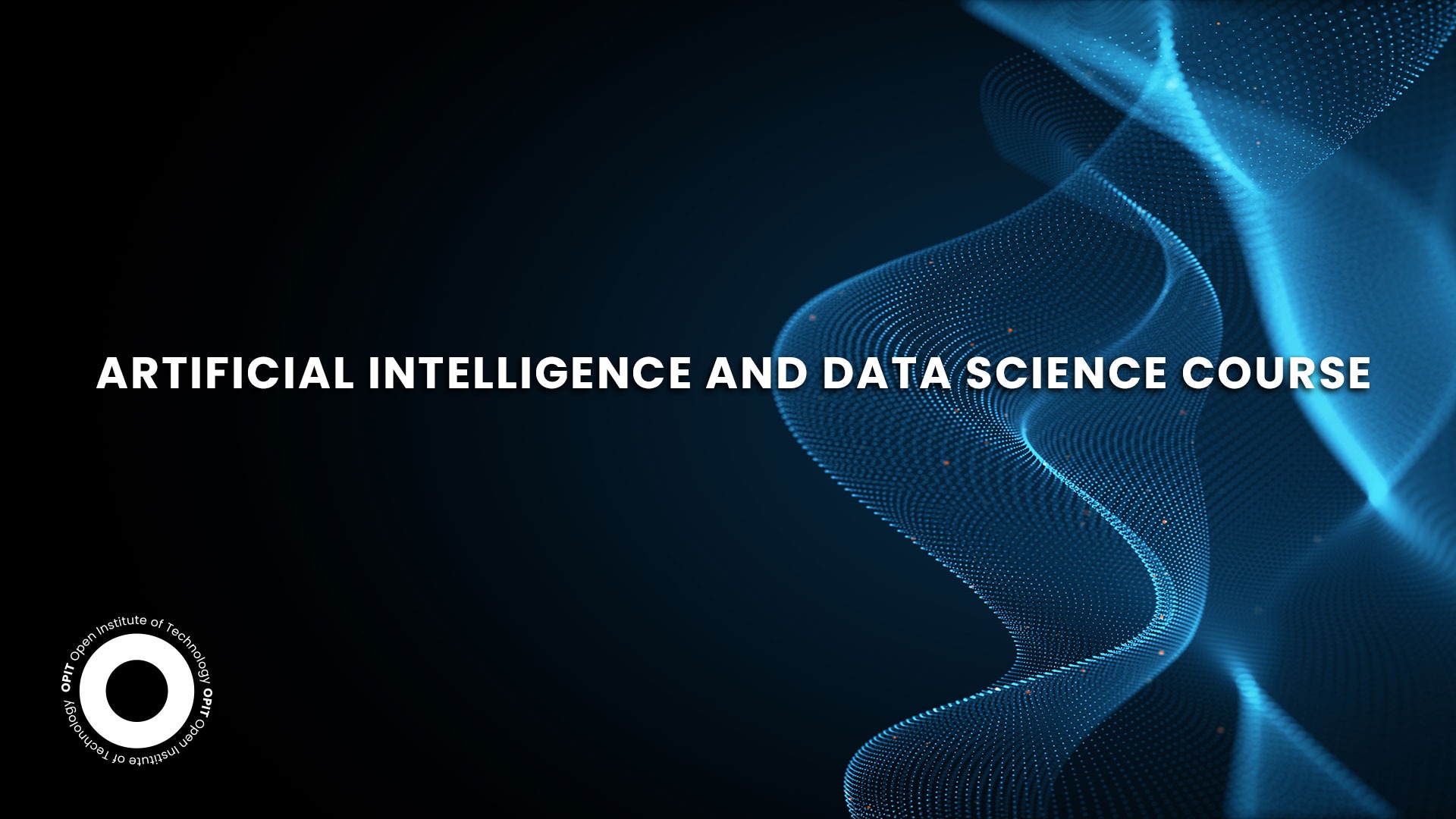

For decades, we have used computers to make important decisions in every arena, from business down to our personal lives. Artificial intelligence is the next evolution in computer-based decision-making. Combined with data science, which is the art of processing, extracting, and analyzing data, AI stands to hold a huge influence over our future.
You stand at the cusp of that technological wave. By completing an artificial intelligence and data science course, you develop dual capabilities that put you in the perfect position to enjoy a superb career.
Factors to Consider When Choosing an AI and Data Science Course
You need to know what you’re letting yourself in for before choosing a data science and artificial intelligence course. After all, the course you choose (and its quality) will impact your career prospects. Consider these six factors when making your choice.
1 – Course Content
Both data science and AI are expansive fields that contain a lot of categories and specializations. So, the question you need to ask is does the course cover what I need to know to get the job I want? If it doesn’t, you end up dedicating months (or even years) of your life to a course that brings you no closer to your goals.
2 – Course Duration and Flexibility
Not every student has the luxury of being able to commit full-time to an AI and data science course. Some have work, families, and other commitments to maintain. Ideally, your course should be of an appropriate length for your needs, in addition to offering the flexibility you need to fit your studies around the rest of your life.
3 – Instructor Expertise and Experience
Though data science has been around for decades, AI is still a somewhat nascent field, at least in terms of its modern form. You want to see that your course is created and overseen by people who know what they’re talking about. Do they have direct industry experience? Are their qualifications up to standard? What does your instructor have that makes taking their AI and data science course worthwhile?
4 – Course Fees and Return on Investment
A career in data science is usually strong enough to offer a good return on investment, with European data scientists pulling in an average of €60,815 per year. Throw AI into the mix and you have extra skills that could easily lead you toward six figures. Still, the cost of the course plays a role in your decision, with some courses costing five figures themselves.
5 – Online vs. Offline Courses
Picking between online and offline courses is like playing an arcade game with a guaranteed prize – there’s no way to lose. Your only consideration is what works best for you. Offline courses are great for self-motivated learners who need flexibility. Online courses put you in a classroom environment so you have direct contact with instructors and peers.
6 – Certification and Accreditation
When you finally start applying for jobs, the first thing your potential employer will ask is “Where did this person study their artificial intelligence and data science course?” The answer to that question will impact their decision, meaning your course provider needs to have a solid enough reputation to make their certifications and accreditations worth having.
Top AI and Data Science Courses
There is a metaphorical river of courses, both online and off, that can teach you about artificial intelligence and data science. Here are four of the best.
Course 1 – AI For Business Specialization (University of Pennsylvania via Coursera)
AI, Big Data, and the core concepts behind machine learning combine to create this AI and data science course. Beyond teaching you how to apply these computing concepts in a business setting, AI For Business Specialization digs into the ethics of applying AI fairly inside a business and how these evolving technologies will affect the people you work with, for, and manage.
Key Features
- Direct exposure to industry-hardened professionals who apply the skills you’re learning
- Includes peer-reviewed assessments designed to test your knowledge
- A 100% online course that offers complete flexibility in how you schedule your learning
- No experience in data science or AI required to get started
Pros and Cons
For somebody new to the concepts of AI and data science, this is the perfect course because it starts you out at the beginner level and builds you up from there. It’s flexible, too, with the course providers recommending two hours of learning per week to complete the four-month course. However, the course carries no university credit, so those using it to supplement their existing studies have to make do with the certificate and nothing more.
Course 2 – Machine Learning (Udacity)
Those looking for a budget-conscious artificial intelligence and data science course can rely on Udacity to provide its Machine Learning course at no charge. You’ll need a solid understanding of concepts like linear algebra and probability theory, making this course unsuitable for beginners. But assuming you come prepared, you’ll learn about the main approaches in machine learning (supervised, unsupervised, and reinforcement learning) in a self-paced online environment.
Key Features
- Takes approximately four months to complete, though you can finish at your own pace
- Created and taught by industry experts
- Ideal for building foundational knowledge for future courses related to data science and AI
- Teaches multiple approaches to machine learning
Pros and Cons
The price is certainly right with this course, as you’re getting something very useful at no cost. It’s also an online version of class CS7641, which is taught at Georgia Tech, so the course has real-world credentials behind it. Sadly, its college-based origins don’t mean that you’ll get college credit with the course. It’s also pretty limited to specific forms of machine learning, making it great as an introduction to basic concepts but perhaps not as useful to people who already have some understanding of data science and AI.
Course 3 – Introduction to Artificial Intelligence (AI) (IBM via Coursera)
Quick, intense, and practical are just some of the words we can use to describe this data science and artificial intelligence course. IBM’s experts are clearly masters in the field (they wouldn’t be working for IBM if they weren’t) and they’ve distilled some of the best of their knowledge into this nine-hour completely online course. You’ll learn about the applications of AI in real-world scenarios, start getting to grips with concepts like machine learning and neural networks, and receive direct career advice from your instructors.
Key Features
- Offered by a Fortune 50 company that specializes in AI and data science
- Free enrollment for a self-paced course
- You get direct career advice from people who work in the field
- The course offers a shareable online certificate that looks great on your LinkedIn profile
Pros and Cons
Let’s get the obvious out of the way first – this is an AI and data science course for those who want to learn the fundamentals before building their knowledge in other ways. But it’s the connections that come with the course that make this such a strong contender. Having people from IBM, who already work in the field that interests you, to advise you is great for people who need a route into AI and data science.
Course 4 – Master in Applied Data Science & AI (OPIT)
A Master’s degree allows you to dig deeper into the concepts of AI and data science, with OPIT’s degree being perfect for those in the postgraduate phase who’ve balked at the cost of similar programs. This AI and data science course requires an extensive time investment of between 12 and 18 months, though it’s fully online so you can learn at your own pace. It also counts toward college credits, offering 90 ECTS upon completion.
Key Features
- Completely online so it offers flexibility in terms of how and where you learn
- Provided by an EU-accredited institution to ensure the certification you receive is actually useful
- You get 24/7 access to tutors who can advise you when you’re stuck
- Progressive assessments are favored over “final exams” and other high-pressure tests
Pros and Cons
This artificial intelligence and data science course is the most expensive on the list, clocking in at €6,500 (or €4,950 for early birds). It also requires a BSc in an appropriate field, such as computer science, to start studying. But that investment in both time and money leads you to a course that has full accreditation under the European Qualification Framework and gives you a well-rounded set of skills that set you up for C-Suite positions in your future career.
Tips for Success in AI and Data Science Courses
An AI and data science course could offer the best tutelage in the world but it won’t mean a thing if you’re not applying yourself as a student. These quick tips help you take what you learn further:
- Set clear goals for what you hope to achieve, both within the course and after completion, so you always have a path to follow.
- Don’t take “this course requires x number of hours per week” as given. Practice and set time to study whenever you can to build on your knowledge.
- As valuable as your peers and instructors may be, they’re not the only resources available to you. Engage with online communities and forums to stay up to date on trends in AI and data science.
- Some courses offer direct examples of how what you learn applies to the real world. Others don’t, so you have to seek out (and apply) your learning to real projects yourself.
- Think about what AI looked like five years ago compared to today. This is a continuously evolving field (the same goes for data science), so continued learning is a must once you’ve completed your course.
Combine AI and Data Sciences for Career Advancement
Earlier, we stated that data scientists earn an average of €60,815 per year in Europe. That’s a starting point. Mastery in the fields of AI and data science (which starts with an artificial intelligence and data science course) puts you in a position to work at the C-Suite level in many of today’s businesses. Investing in yourself now, when these fields are still in their growth phase, puts you in the perfect position to take advantage as we see both fields enjoy explosive growth in the future.
Have questions?
Visit our FAQ page or get in touch with us!
Write us at +39 335 576 0263
Get in touch at hello@opit.com
Talk to one of our Study Advisors
We are international
We can speak in:




